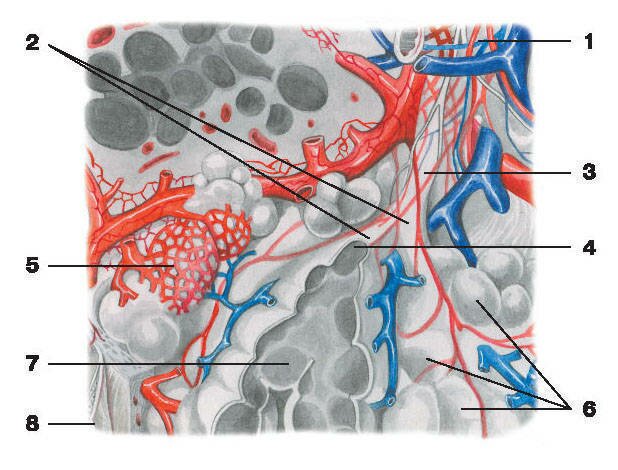lung anatomy
lungs- life is important to the organization, responding to the exchange of acid and carbon dioxide in the body of people and to determine the diversified function. The lungs of people are a young organ, the protest of the left and right lung is not identical to one to one. Liva legend starts to grow into smaller sizes and go into two parts, at that time, like the right legend, go into three parts and even more size. The reason for the change in the size of the left leg is simple - in the left part of the breast cell, the heart grows, that the dysfunctional organ "acts" on the other side in the empty breast cell.
Roztashuvannya
The anatomy of the lungs is such that the stench lies down to the heart of evil and on the right. The skin is easier to form a truncated cone. The tops of the cones slightly protrude behind the clavicles, and then they lie down to the diaphragms, so that the empty breast cage is empty. The name of the skin legend is in a special two-ball sheath (pleuroy). One of the balls is lying down to the legacy fabric, and the other one is lying down to the breast tissue. Particularly zolozi vidіlyayut rіdina, yak will remember the pleural emptying (the gap between the balls of the zakisnaya shell). Pleural bears, isolated one kind of one, in which lungs are invested, they will not have the main function. Zapalennya zahisnyh shells of legacy fabrics are called.
Why are lungs stored?
The diagram of the lungs includes three important structural elements:
- Legeny alveoli;
- bronchi;
- Bronchioles.
The bronchial system is designed with a framework of legends є. Skin is easier to build up with no structural unit (patch). The dermal part has a pyramidal shape, and the size in the middle becomes 15x25 mm. At the apex of the part of the lung, the bronchus enters; The entire skin bronchus is 15-20 bronchial tubes. At the end of the bronchial tubes there are special illumination - acinus, which are stored in dozens of decile alveolar holes, covering the free alveoli. Legendary alveoli are not very large and thick with even thin walls, wrapped around by a small frizzy capillary.
- navazhlivіshі structural elements of the lungs, such as to lay a normal exchange of acid and carbon dioxide in the organіzmі. The stench will give you a large area for gas exchange and continuously deliver blood-bearing judges. In the course of gas exchange, oxygen and carbon dioxide gas penetrate through the thin walls of the alveoli into the roof, de "start" with the erythrocytes.
Heads of microscopic alveoli, the middle diameter of which does not overlap 0.3 mm, the area of the dysfunctional surface of the legends grows up to 80 square meters.

A bit of legend:
1 - bronchiole; 2 - alveolar walk; 3 - dichal (respiratory) bronchiole; 4 - atrium;
5 - capillary alveolar hem; 6 - alveoli of the leg; 7 - alveoli in size; 8 - pleura
What is the bronchial system?
Persh nіzh eat in the alveoli, after drinking it in the bronchial system. The trachea is the "gate" for the mouth (the tube is dyshlastic; The trachea is stored from the cartilaginous chickens, which will prevent the stiffness of the respiratory tube and preserve the education for mental health in the minds of a developed trachea, or mechanical health of the trachea.

The bronchial system is like a green tree, which penetrates the Legene tissue and prevents uninterrupted gas exchange in the human body. As well as large bronchi and trachea are strengthened by cartilaginous rings, then more other bronchi do not require modification. In the segmental bronchi and bronchial tubes, there are only cartilage plates, and in the endovian bronchial tubes, the cartilage tissue is on the outside.
Budova legends will take care of a single structure, the staff of all systems of human organs will be sure to get sour through blood-bearing judges without interruption.
You can read more:



